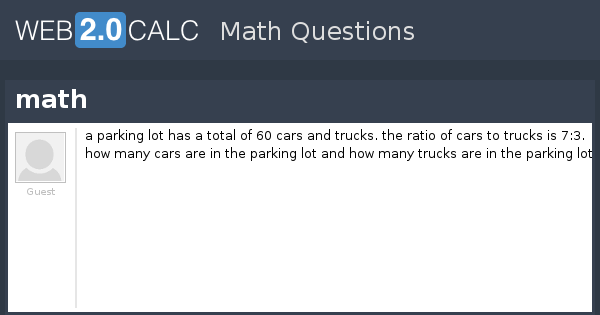Enjoy the videos and music you love, upload original content, and share it all with friends, family, and the world on YouTube. Unit 1 Goals Goal 1: Real-World Unit Rates (7RP1) Learnzillion Goal 1: Real-World Unit Rates (7RP1) Youtube Goal 1: Real-World Unit Rates (7RP1) Khan Academy.
The new European data protection law requires us to inform you of the following before you use our website:
We use cookies and other technologies to customize your experience, perform analytics and deliver personalized advertising on our sites, apps and newsletters and across the Internet based on your interests. By clicking “I agree” below, you consent to the use by us and our third-party partners of cookies and data gathered from your use of our platforms. See our Privacy Policy and Third Party Partners to learn more about the use of data and your rights. You also agree to our Terms of Service.

Lesson 1: Introduction to Percentages
What are percentages?
A percentage is another way of writing a decimal. Just like decimals, a percentage is a part of a whole. Basically, it's less than 1 whole thing, but more than 0.
We use percentages all the time in real life. For example, have you ever left a fifteen percent tip at a restaurant? Or bought something on sale for twenty percent off? Those are both percentages—15percent and 20percent.
Click through the slideshow to learn how percentages work.
Let's look at some more percentages from real life. In Introduction to Decimals, you learned that 25 cents is 0.25 of a dollar.
Another way to say this is that 0.25 cents is 25percent of a dollar.
What about two quarters, or fifty cents? That's 0.50, or 50percent of a dollar.
Three quarters would be 75 cents, or 75 percent of a dollar.
And four quarters, or 100 cents, would be 100 percent of a dollar...
And four quarters, 100 cents, would be 100 percent of a dollar...or one whole dollar.
Percent literally means 'per hundred', or 'out of a hundred'.
In our example, every dollar is made up of one hundred pennies, or 100 cents.
So you could say that each penny is equal to 1 percent of a dollar.
Let's look at another example. Let's imagine we cut a pizza into five slices.
Each slice is equal to one-fifth, or .20, of the pizza.
We know that one slice is equal to .20 because .20 + .20 + .20 + .20 + .20 = 1.00.
So we can also say that one slice is equal to 20 percent of the pizza.
We can use the percent sign (%) to write that as 20%.
Right now, we have one whole pizza, or 100% of the pizza.
What if we take away one slice? Now we have 80%. That's because we removed a slice, or 20% of the pizza.
What if we take away two slices? Now we have 60%.
Now we have 40% left.
Even though we have less than one pizza, we still have more than zero pizzas. We have a percentage of the pizza left.
Writing percentages
As you saw in the slideshow, every percentage has two parts: a number and the percentsign (%). When you write a percentage, you'll write the number first, then the percent sign. Let's try it! How would you write this percentage?
nine percent
First, we'll write the number, nine, and then the percent sign (%). So our percentage will look like this:
9%
Try This!
Try writing the correct percentage in the box.
Reading percentages
When you read a percentage out loud, you'll need to read two parts: the number and the percentsign (%). Let's look at an example:
25%
25% is twenty five out of one hundred. We'd read 25% like this:
twenty-five percent
Sometimes percentages might have a decimal. For example:
7.5%


Here, 7.5% means we have seven-and-a-half out of one hundred. We'd read it like this:
seven point five percent
OR
seven and a half percent
You can read any percentage with a decimal point like this. How about 10.25%? That's ten and one quarter out of one hundred, so we'd read it as ten point two five percent, or ten and a quarter percent.
Try This!
Try reading each of the percentages below aloud.
Comparing percentages
Let's imagine you're shopping for apple juice. You find two different kinds—one contains 20% real juice, while the other contains 50% real juice.
Do you know which bottle has more real juice? Since both bottles are the same size, we can simply compare the numbers to see which percentage is larger.
50 is larger than 20, so 50% is a larger percentage than 20%. The larger the number next to the percent sign, the larger the percentage.
What about these percentages?
7% and 17%

Which is larger? Again, we'll look to see which number is larger. 17 is larger than 7, so 17% is a larger percentage than 7%.
Comparing percentages with decimals
What if you had to compare two percentages like this?
5.4% and 5.5%
At first glance, it might be difficult to tell which percentage is larger. Remember, this is just another way of asking, 'Which is larger, five and four-tenths of a percent or five and five-tenths of a percent?' Since the first number is the same for both fractions, we'll compare the numbers to the right of the decimal place.
5 is larger than 4, so 5.5% is larger than 5.4%.
Unit Rate Ratios
What about these percentages?
Ratios And Percents Worksheets
5.55% and 5.56%
Again, since the first number is the same, we'll compare the numbers to the right of the decimal place.
56 is larger than 55, so 5.56% is larger than 5.55%.
/en/percents/calculating-percentages/content/


Comments are closed.